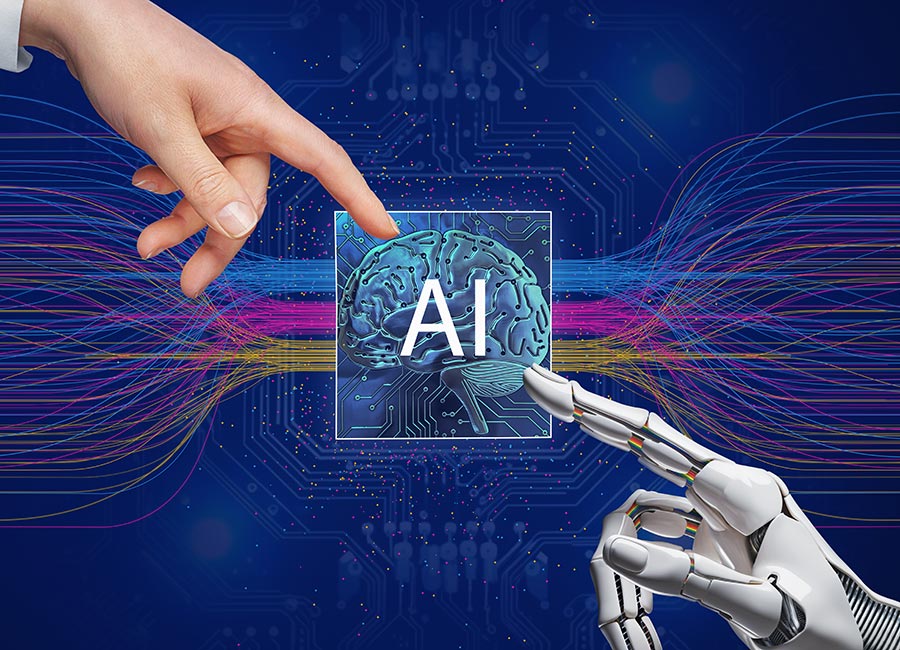The influence of generative artificial intelligence (AI) on cybersecurity will increase next year in response to greater use of the technologies by criminals for advanced cyber threats like deepfakes, phishing, data manipulation and malware.
The 2025 Cybersecurity Outlook report from Tata Consultancy Services (TCS) projects that generative AI, cloud security and supply chain resilience will all be key for organisations in navigating threats next year.
The Donegal-based IT services, consulting and business solutions firm said that organisations must "fight fire with fire" by deploying generative AI threat detection and response systems in the coming months.
Additionally, cloud security remains crucial, and organisations need to implement strong security protocols like encryption, access controls, and continuous monitoring.
TCS said that maintaining proper cloud configurations is crucial to prevent unauthorised access and breaches, and those moving to multi-cloud or hybrid environments will need to adapt their security measures accordingly.
The company said that organisations will also need flexible, resilient supply chains due to "changing geopolitics and partner ecosystems."
"Leaders must develop proactive strategies to adjust their supply networks, while protecting sensitive data and maintaining regulatory compliance," it said.
"Enhancing supply chain resilience will be increasingly vital for preserving operational integrity in the face of uncertainty."
Additionally, companies must secure their value chains to ensure their businesses are safe by design in the face of new business models in EV charging, DERMS, autonomous vehicles, and other connected factories being driven by digital technologies, IoT capabilities, and advanced connectivity.
By 2025, the growth of IoT devices will require stronger device hardening, secure communication channels, and ongoing vulnerability assessments to maintain momentum in business growth, TCS said.
The report also posits that organisations are moving from traditional security models to zero-trust architecture, which requires continuous authentication and limited access to minimise threats.
Over the next couple of years, most large enterprises are expected to adopt zero-trust methods, consolidating security tools to be more efficient, and TCS believes organisations should use integrated platforms for orchestrating and automating cybersecurity while working towards Cybersecurity Mesh Architecture (CSMA) for "dynamic, collaborative, and secure environments."
Chief security officers are also expected to adopt an 'automation-first' approach to managed detection and response (MDR), which combines security information and event management (SIEM), security operations centres (SOCs), security orchestration, automation and response (SOAR), extended detection and response (XDR), threat hunting, threat intelligence, and various attack simulations.
TCS said such an approach would allow for strong cyber defence against new technologies, and tat companies are likely to seek more industry-specific and integrated cyber-physical security solutions next year.
Finally, the TCS believes organisations need to take a fresh look at the basics to improve their cyber resilience: regular backups, detailed incident response plans, and business continuity measures.
"Something as simple as regular drills can enhance organisational preparedness and response capabilities. Promoting a culture of resilience will help minimise downtime and disruptions from cyberattacks," TCS said.

Commenting on the report TCS global head of cybersecurity Ganesa Subramanian Vaikuntam said: “With geopolitical shifts and evolving technology, global cybersecurity is undergoing a major transformation. GenAI is enhancing operational efficiencies, but organisations must equip themselves to counteract cyber threats.
"It is imperative for organisations to harness these advancements and implement GenAI-powered threat detection and response systems to stay ahead of the curve.
"In this era of evolving technologies, a robust and proactive cyber resilience strategy is not just an option, but a necessity for enterprises to effectively navigate and mitigate unforeseen cyber incidents.”
(Pic: Getty Images)











